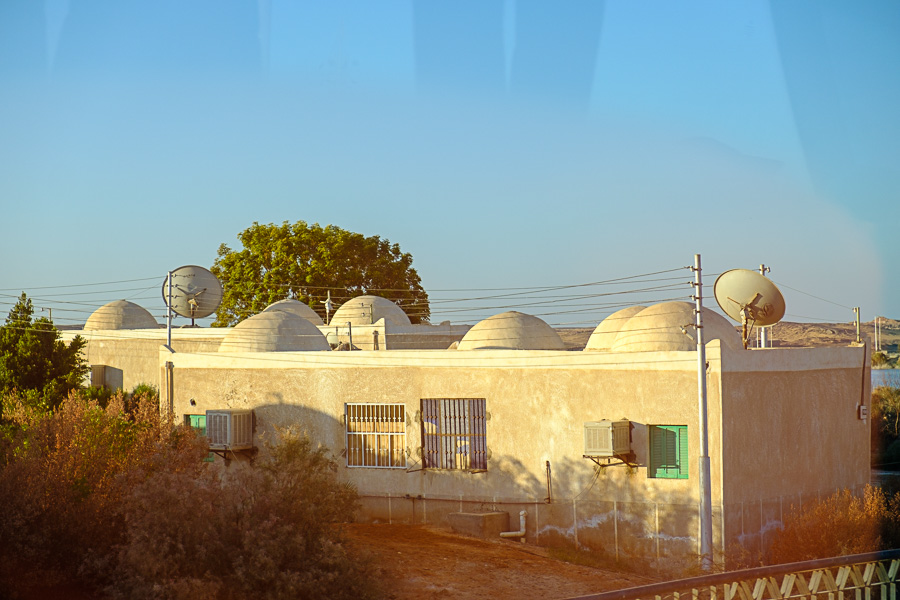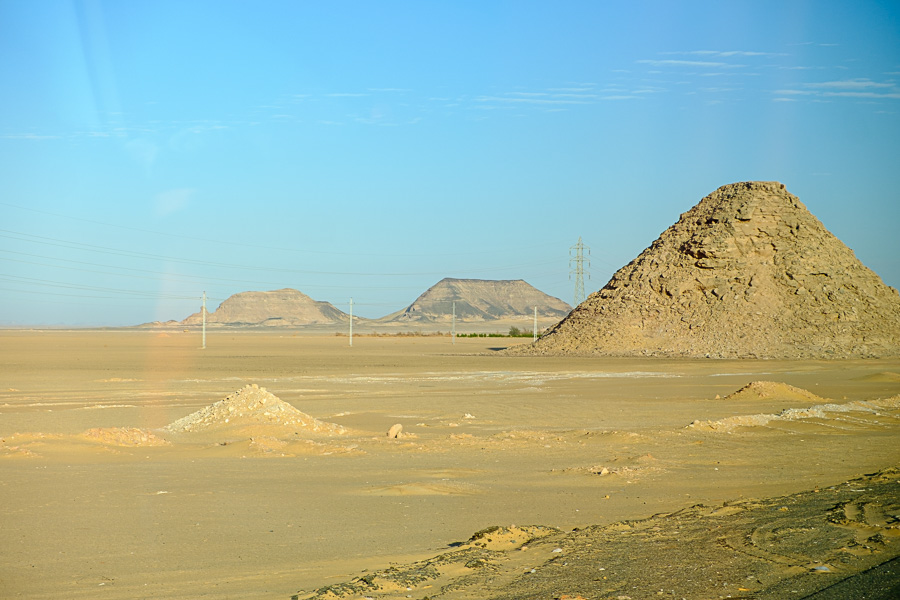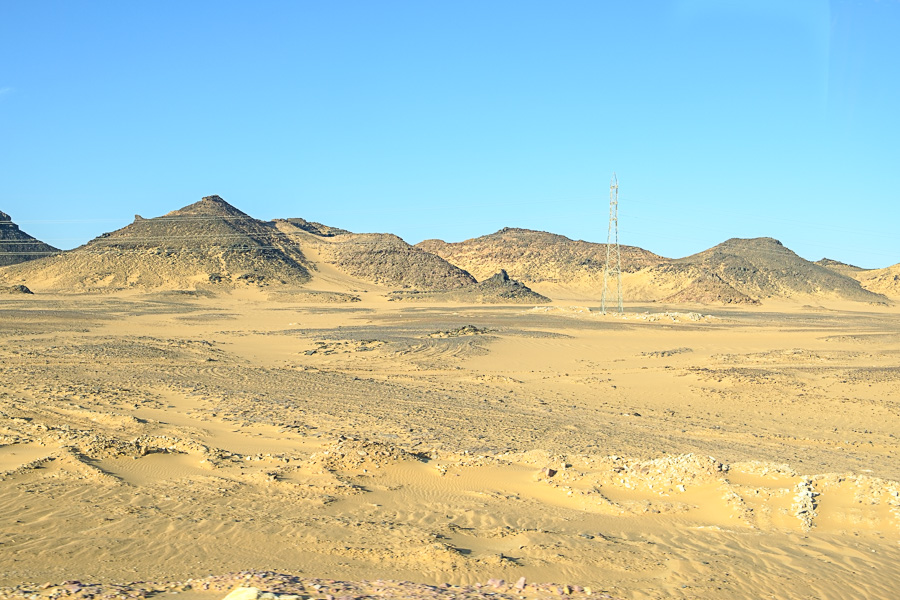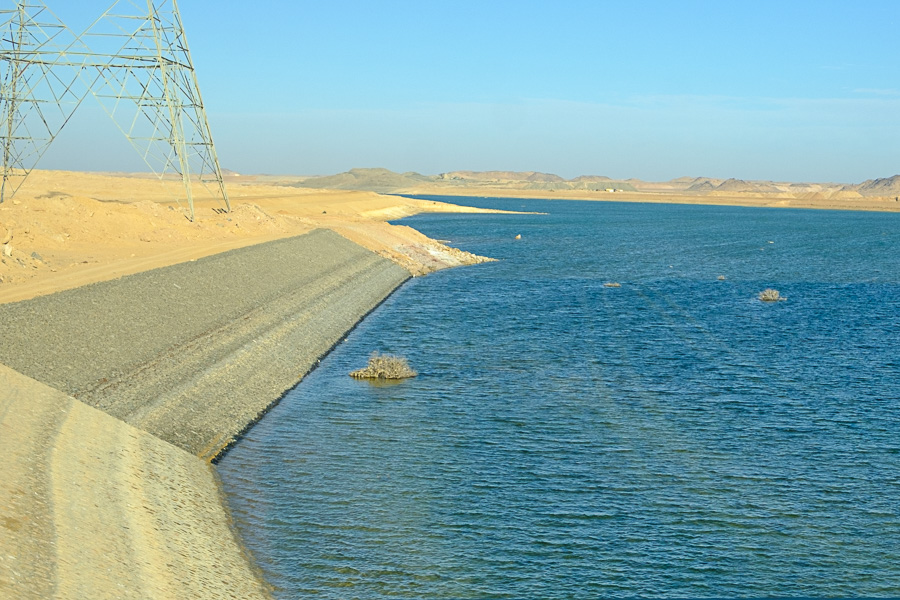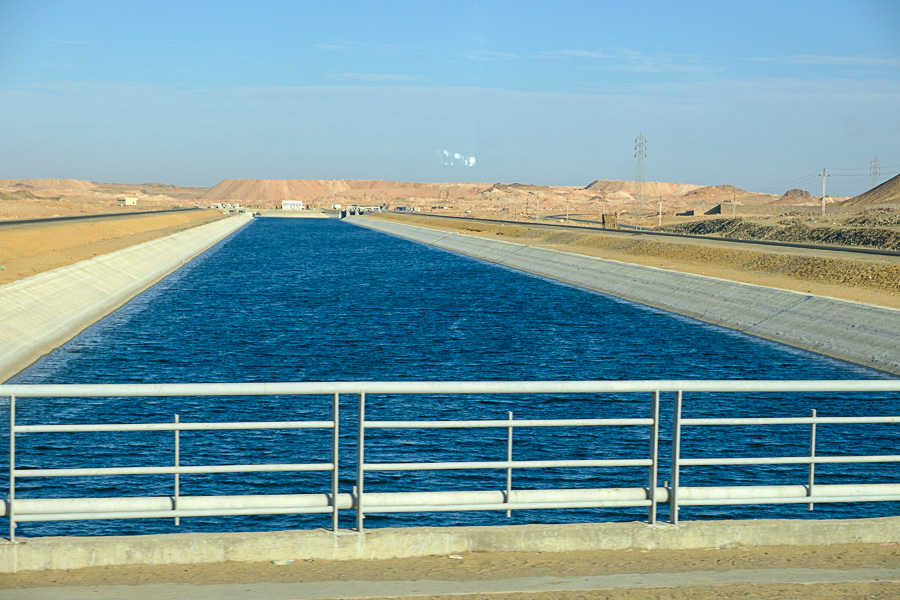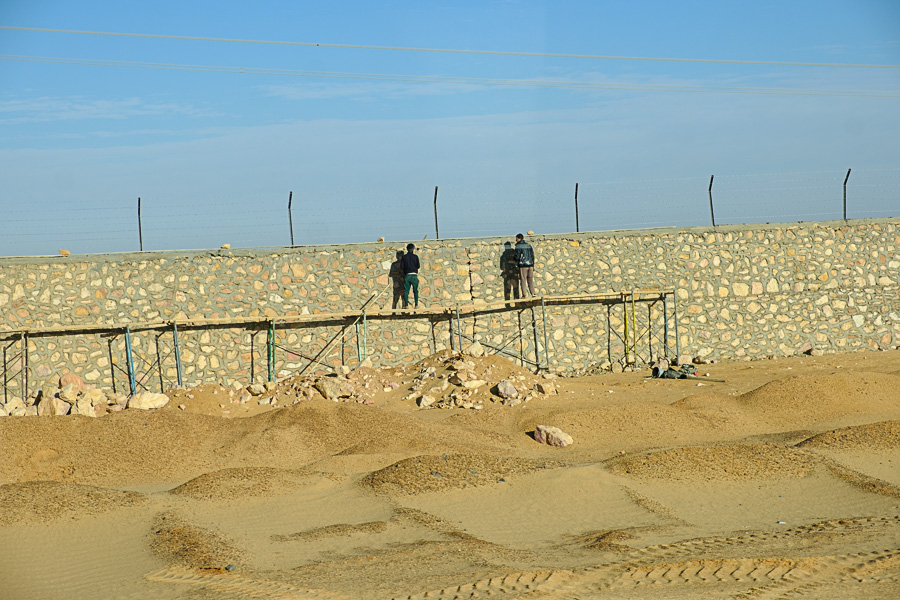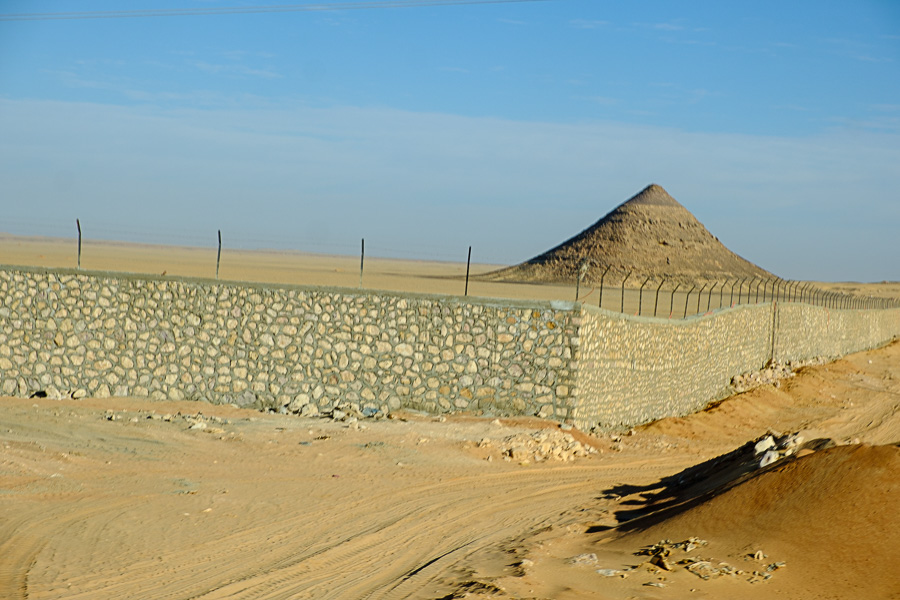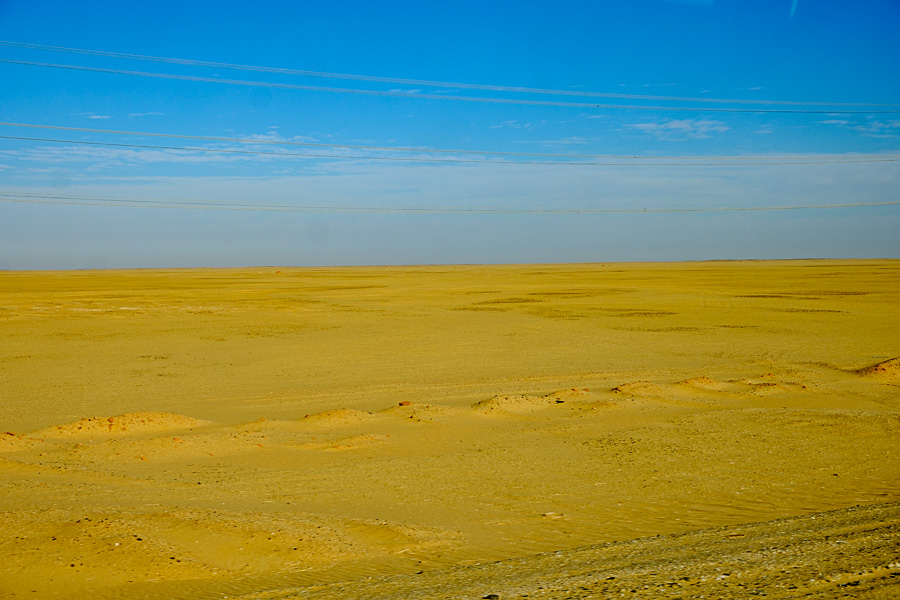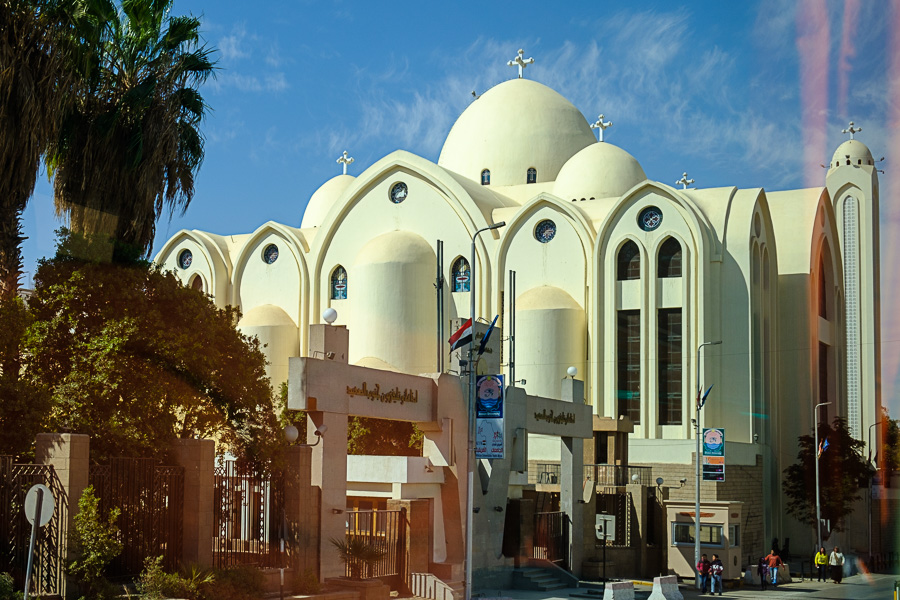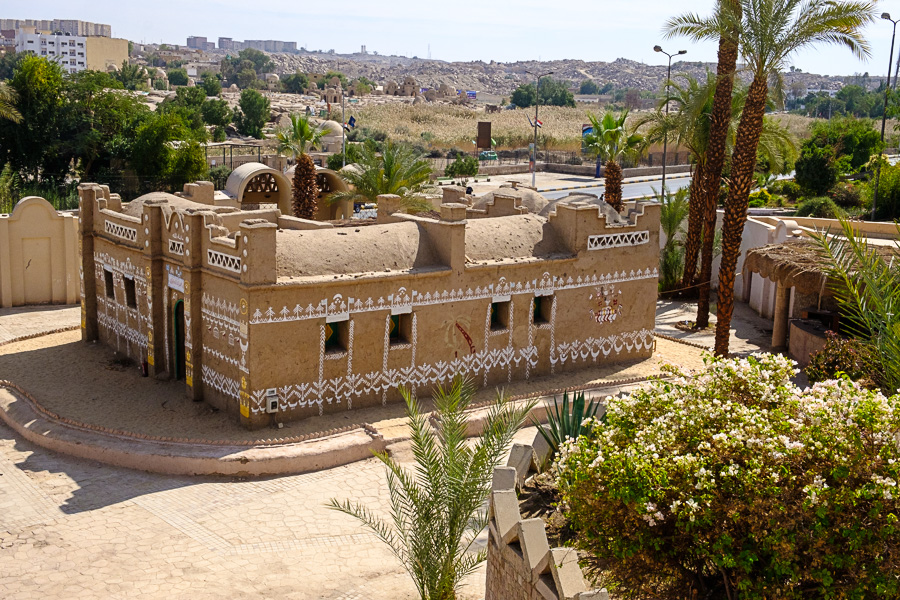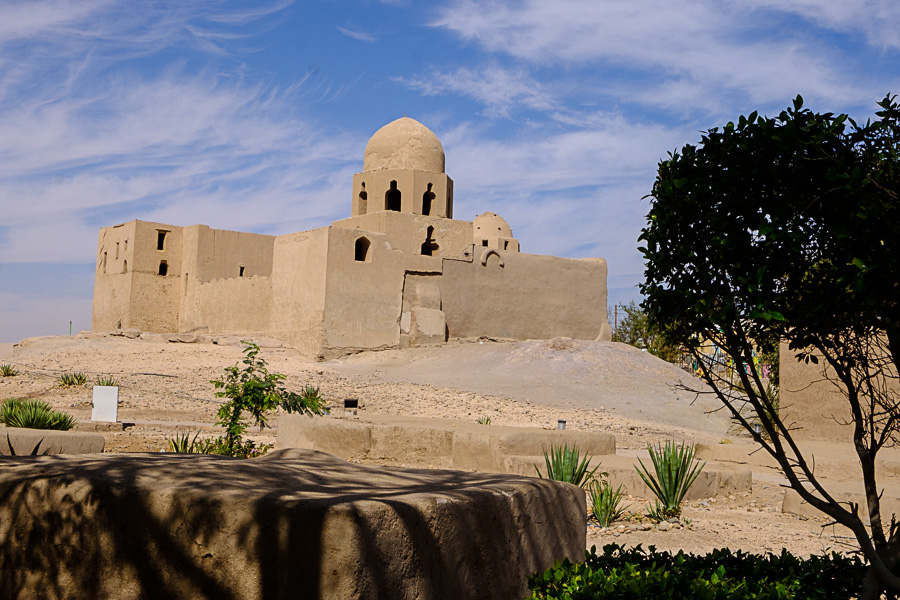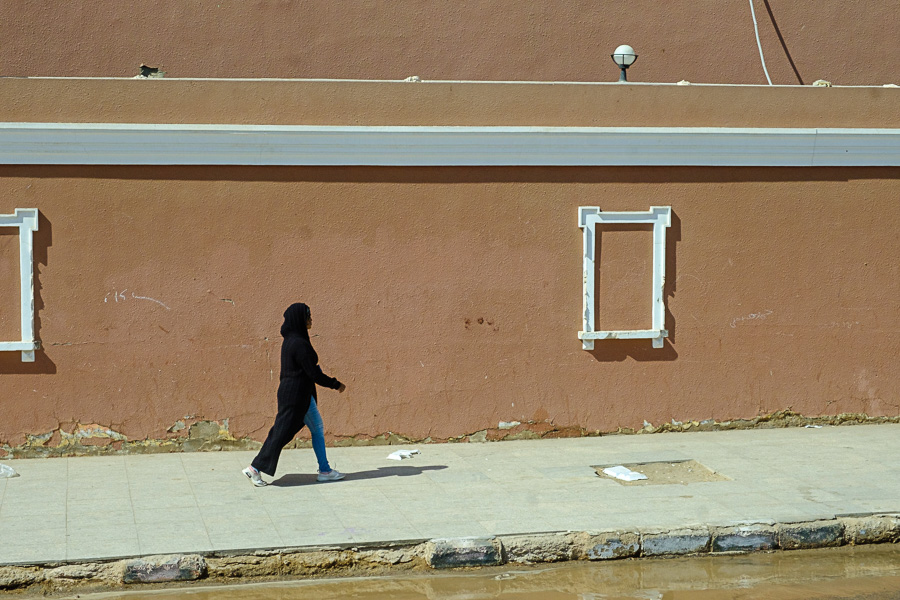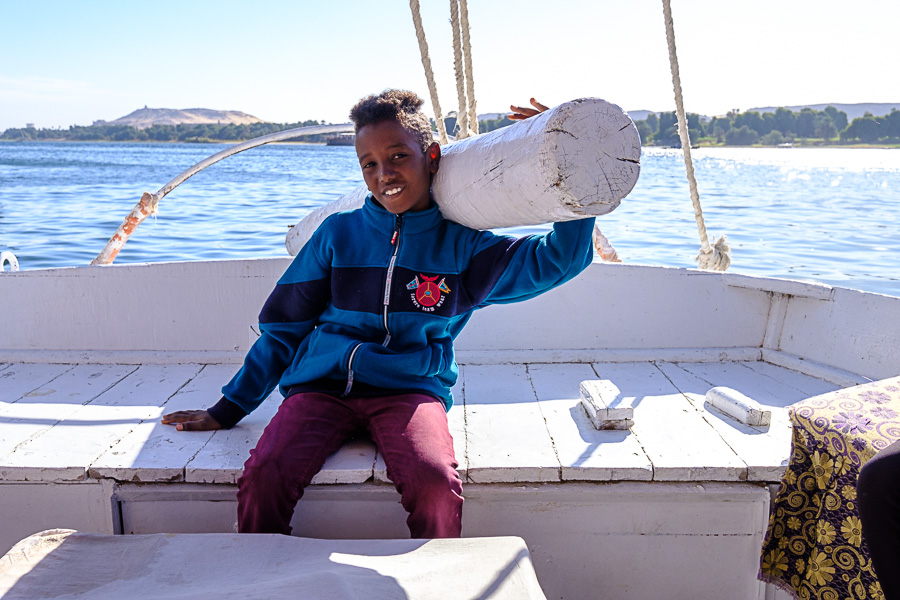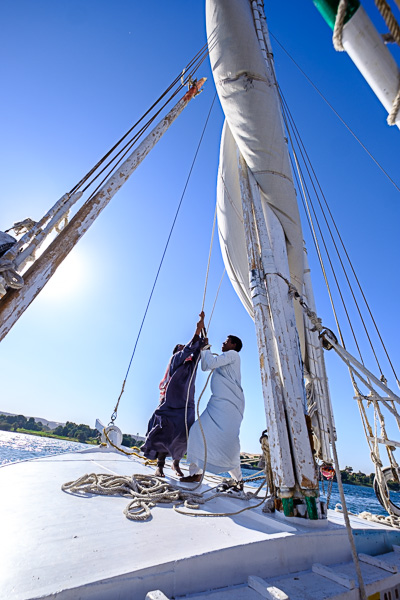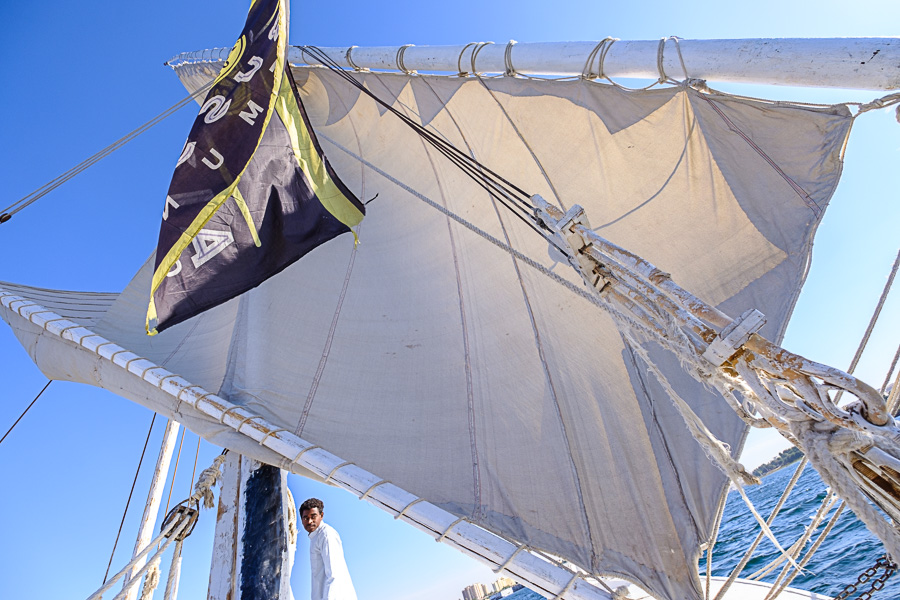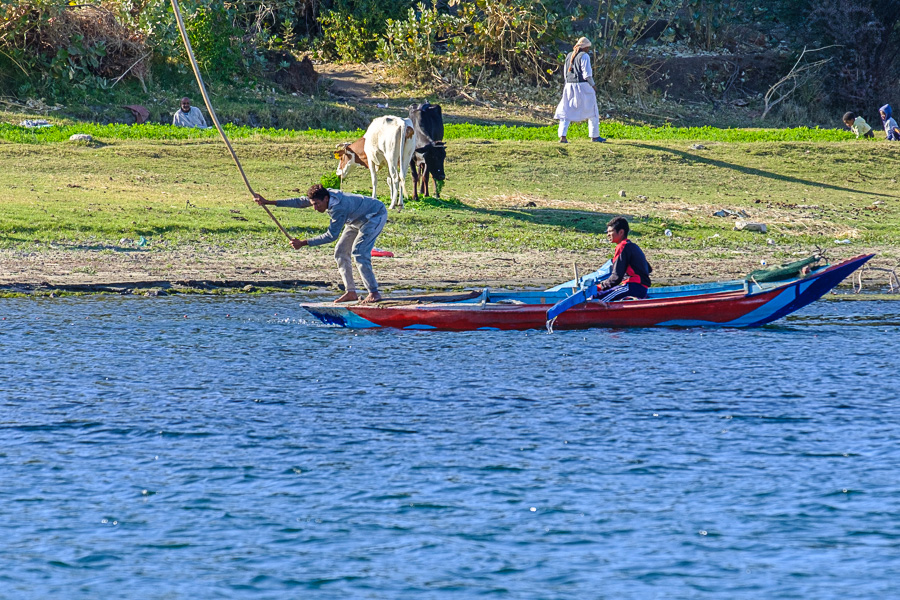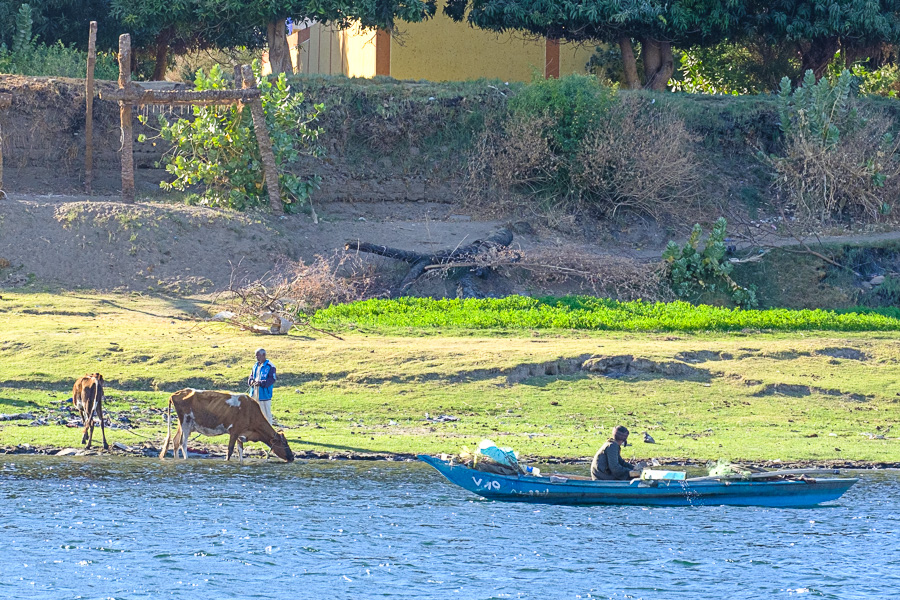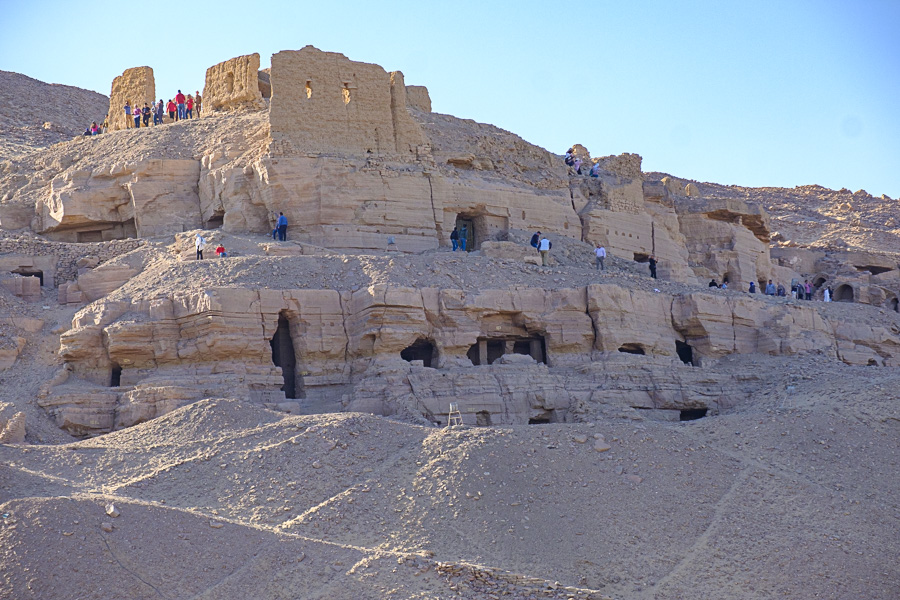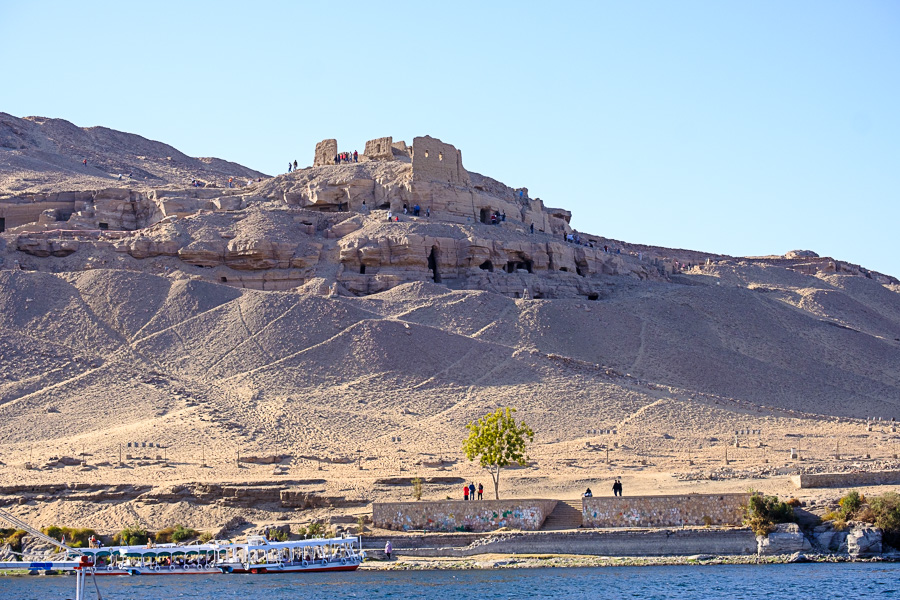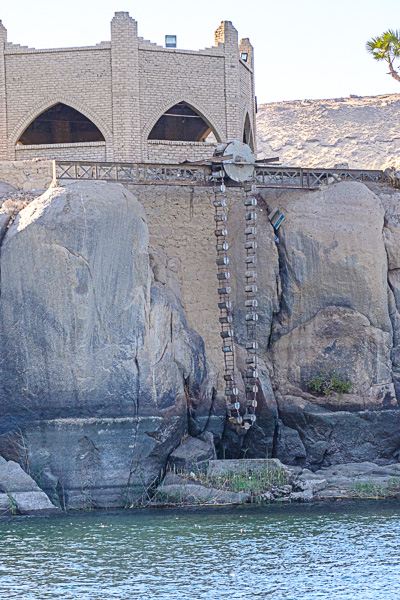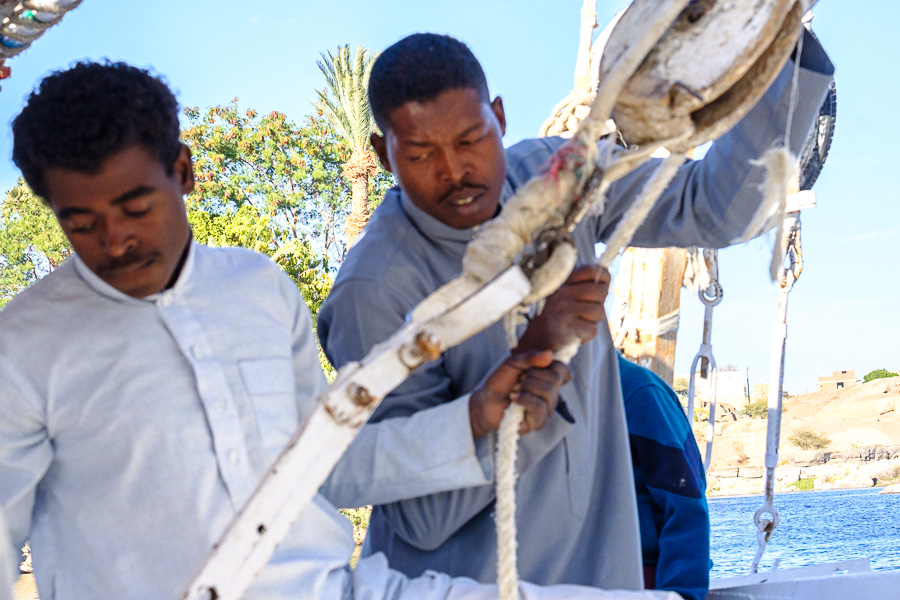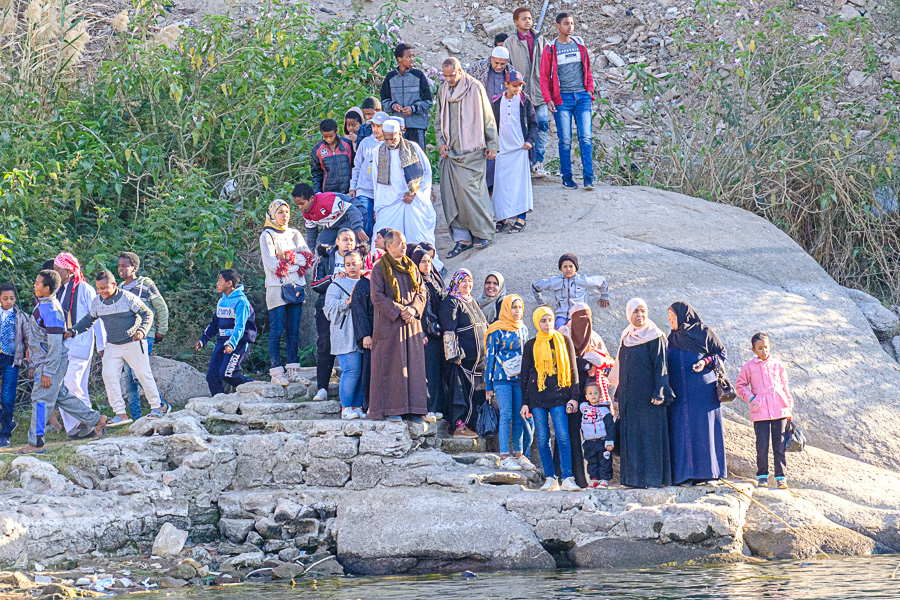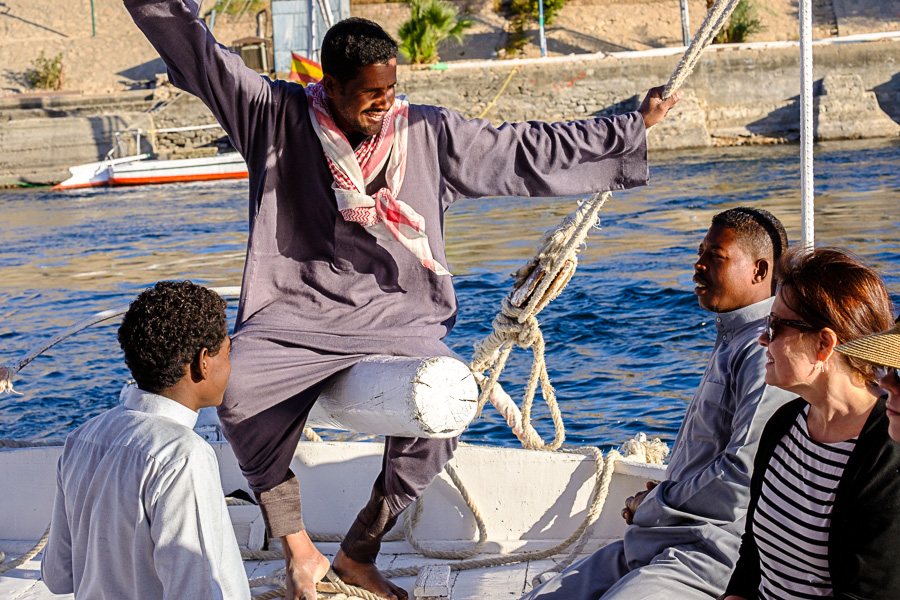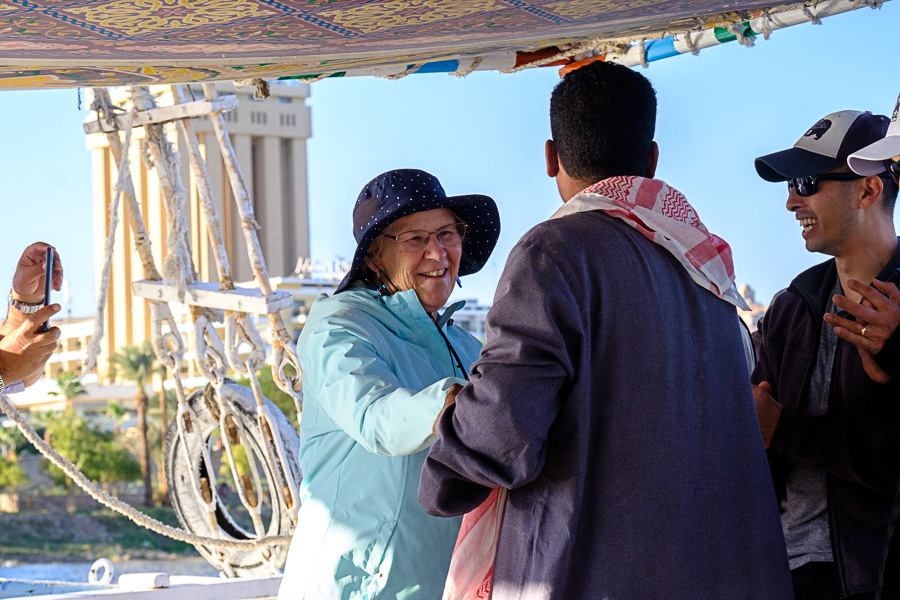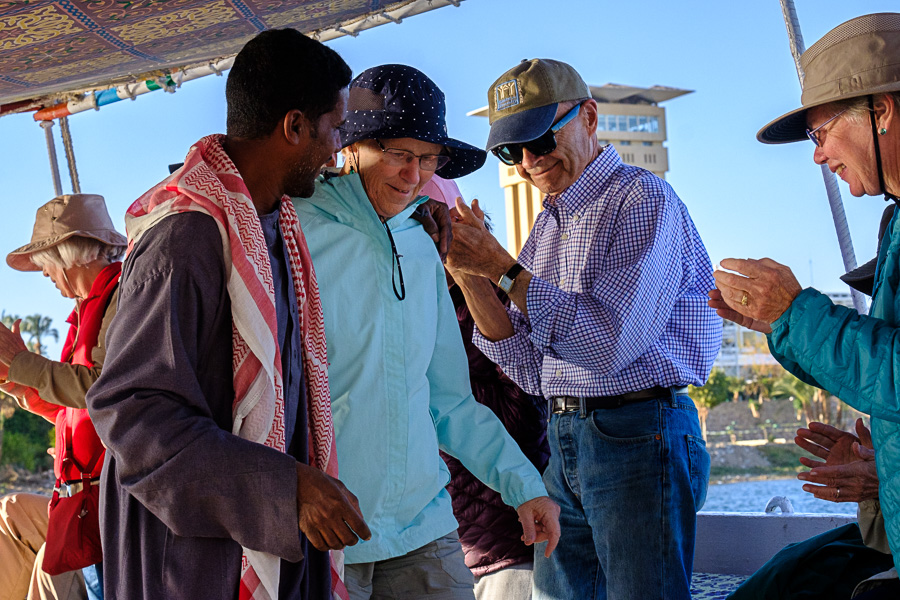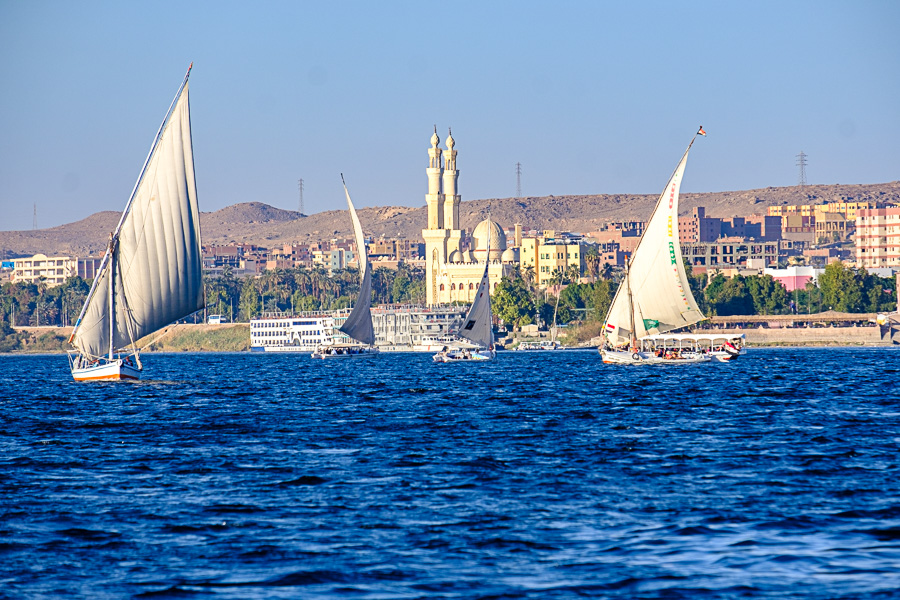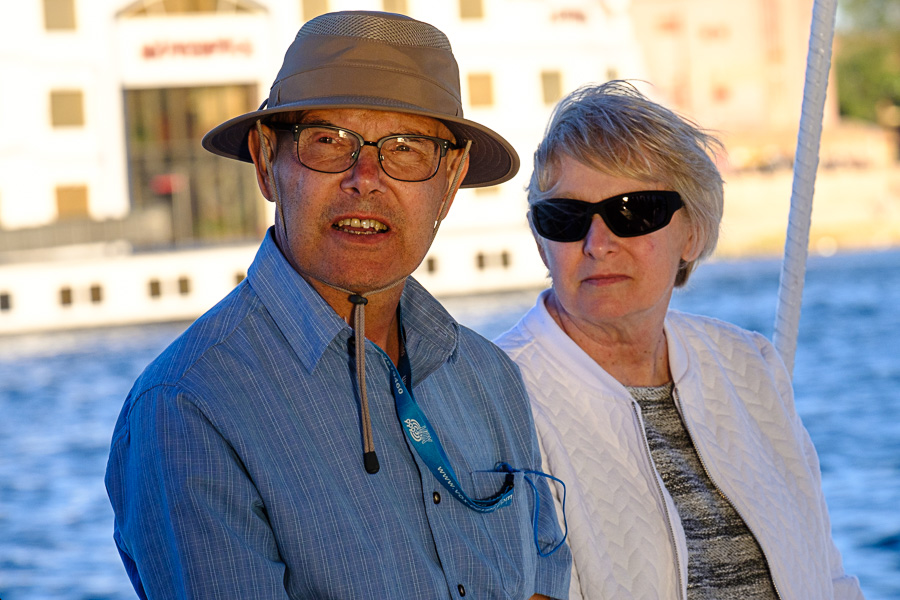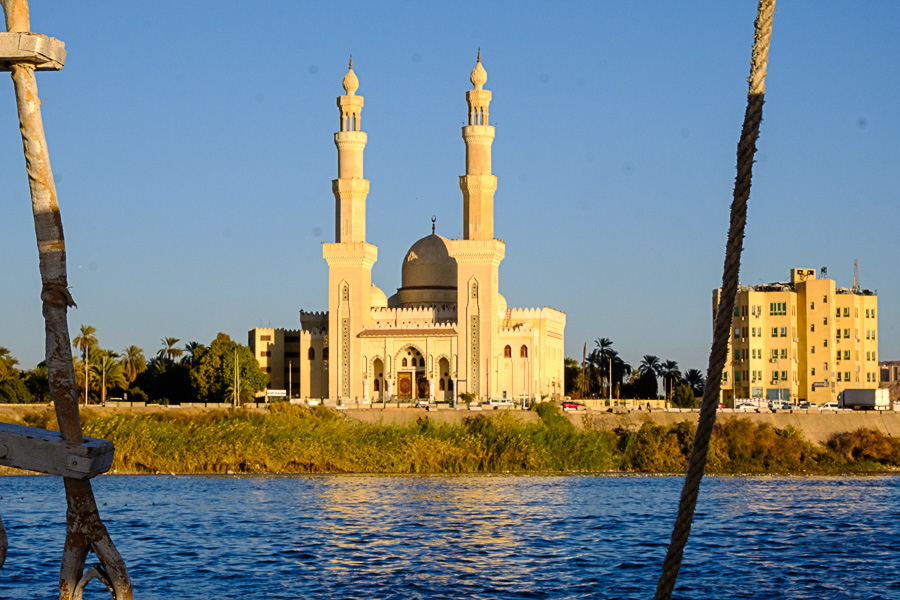The highlight today was a felucca ride on the Nile. It’s been a typically nice Egyptian day- sunny, no clouds, low-to-mid 70s – and we were blessed with a wind from the north. Since the river flows from south to north that means we sailed against the current but with the wind on the first half of our trip and with the current and tacked up wind returning.
A felucca is a traditional Egyptian single-mast single-sail craft with a center board and is quite maneuverable. Once the sail is set the rudder man in the rear can control the ship without assistance. Tacking can be done by simply throwing the tiller over and allowing the boom to swing across, well above the passengers’ heads.
We sailed upriver, passing Kitchener Island (former retirement home of the famous British general) and circling around Elephantine Island, a famous landmark in pharaonic history. On one side of the river we saw hotels and moored cruise paddle board. On the other, bucolic views of horses, cows, fisherman and even Moses-style bull rushes. The river was crowded with other sail and motorized craft, ranging from huge cruise ships (huge for the Nile, that is) to a two-boy kayak. The lads grabbed hold of our gunnels and drifted along with us singing Nubian songs, ending with Frère Jacques and Macarena. Another boy, Yosef, the son of our helmsman, was onboard helping. He’s 11 years old and in the fifth grade.
The crew sang some traditional Nubian songs as well, accompanied by only a single tambourine-like instrument. That’s where Judy got up and danced with a crew member.
To start the day, we bussed from our ship through the outskirts of the town of Abu Simbel and north through the desert to Aswan. Houses in the outlying towns exhibited the characteristic domed roofs, designed to more efficiently reflect the sun’s rays in the height of summer.
The desert is, as we’d anticipated, full of sand, but that’s not all. The vast stretches of sand are broken by strange cones of rock and sand. Sometimes they form a range of hills perhaps several hundred feet high. Other times there are single, isolated cones as if someone had filled a funnel and tipped it over upside-down on the desert floor. Hatem couldn’t provide an explanation and my guess is that ancient layers of rock withstood the desert winds while neighboring areas didn’t, leaving the hardier sections standing and the others blowing away. But that’s just a guess. Whatever, it was a beautiful sight.
At one point we crossed over two relief canals, ditches dug to take spillover water from Lake Nasser when the water level reaches dangerously high levels. Hatem explained that the government is launching an experiment to see if this extra water can be used to raise crops in desert soil, perhaps supplemented by silt dredged from the bottom of Lake Nasser. The Egyptian military has fenced in a huge tract of desert in anticipation of future agriculture business (the military has its fingers in many, maybe all, domestic projects). There are signs of housing being constructed in hopes that people will live there to tend the crops.
Egypt is desperate to find ways to expand habitation into desert areas. Of Egypt’s 387,000 square miles, only 5% or about 19,000 square miles is habitable. With a population of 100 million, that’s a lot of tomatoes squeezed into a little bitty can. The U.S., with just a little more than three times the population has 3.8 million square miles of which 47% is uninhabited, 1.9 million inhabited. You do the math: 1/3rd the people in 1/100th the area. Getting folks out of the city and into the desert has a big payback for Egypt. Finding ways for them to live and work there is the challenge. This agribusiness experiment is a move in that direction. Egypt is building a governmental administration center outside of Cairo for the same reason.
Upon arrival in Aswan we paid a visit to the Nubian Museum. It has great exhibits covering the Nubian region from prehistoric times, through the pharaonic times, including the dynasties whose kings were Nubian, through Christianization and Islamization and beyond. There’s also a very nice outside garden area that has a traditional Nubian house.
While touring the Museum’s outside gardens the noontime call to prayer was sounded. Actually, a whole bunch of calls to prayer were blasted out from the many minarets around town. Then we could hear chants raising from the various temples. Hatem said he couldn’t leave us to join in but would pray later in the day. Shops were closed but would reopen after prayer time, he said.
So now it’s dinner at 7 and another Nubian show at 9. Our new ship, the Farah Nile, sails at 10 PM. We’re off the boat at 7 AM to see the first of howmanyever temples tomorrow. I don’t know how a fellow’s supposed to get any shuteye on this excursion.

